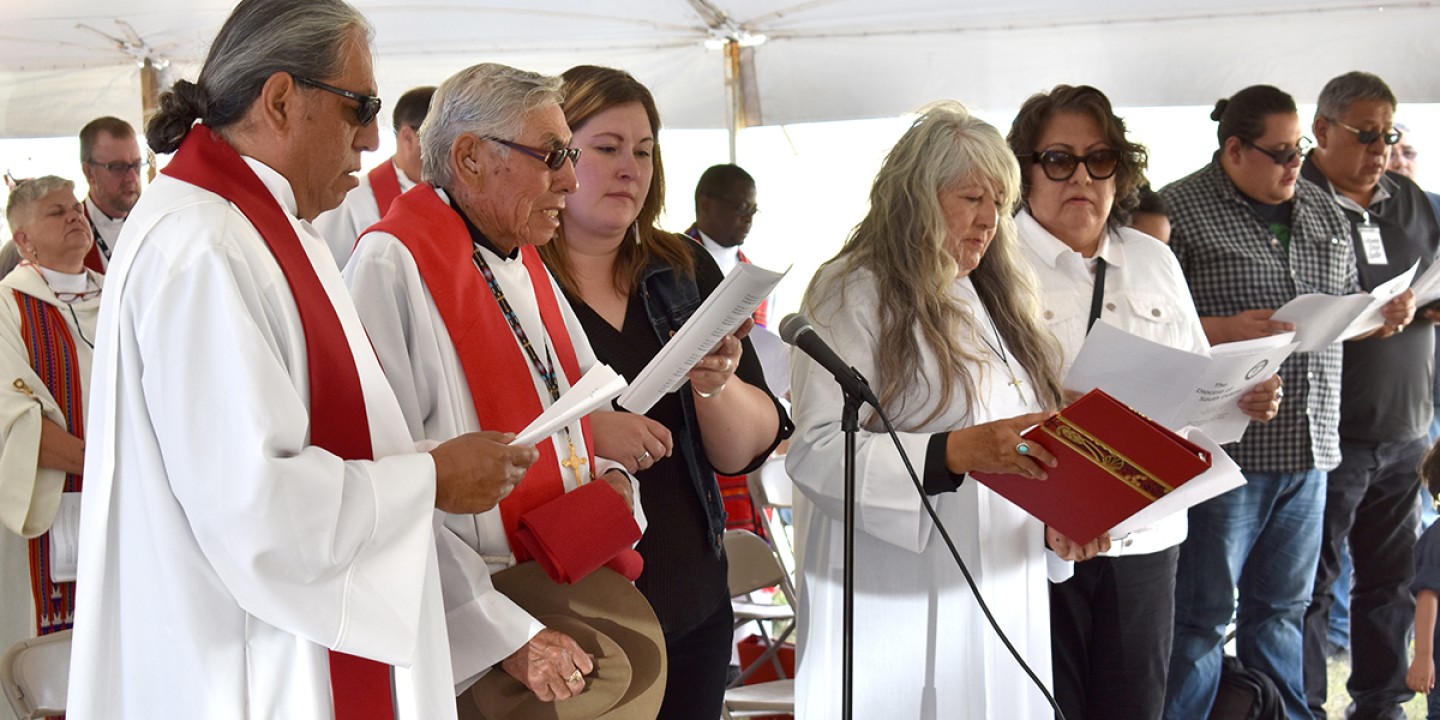Episcopal Church backs new Lakota translation of prayer book
Funding liturgical translations also helps preserve indigenous languages at risk of being lost.

Expanding its investment in translating the Book of Common Prayer into indigenous languages, the Episcopal Church has given the Diocese of South Dakota a grant to pay for a new Lakota translation.
A year ago a similar grant was awarded to the Diocese of Alaska in support of a translation of the prayer book into Gwich’in, the language of many Native Alaskans.
By adding to those existing resources, the Episcopal Church has an additional purpose in mind: to help preserve Native languages that are at risk of being lost at a time when many younger Native Americans are learning English as their first language.
“Language and culture are so intimately connected,” South Dakota bishop John Tarrant said. “A lot of anthropologists say when you lose your language you lose part of your culture.”
Bradley S. Hauff, Episcopal Church missioner for indigenous ministries, noted that knowing the language aids in understanding indigenous culture and spirituality.
“The church has been and should be a place where indigenous languages can be learned, expressed in that way, safeguarding them and promoting them,” Hauff said. “Any attempt that we as a church can make to preserve these languages is our obligation.”
Read our latest issue or browse back issues.
The Episcopal Church, through its historical missionary work with indigenous populations, was at least partly complicit in the U.S. government’s efforts to assimilate Native Americans into white culture while eradicating their culture, including language. In the face of that history, Tarrant said, the church is offering “tremendous support” for cultural preservation efforts.
The nine tribes in the Diocese of South Dakota rely on a partial translation of the 1928 Book of Common Prayer that is known as the Niobrara service book. The language is comprehensible but archaic, said Paul Sneve, the diocese’s archdeacon, who is overseeing the translation process.
“Imagine the difference between speaking King James English and speaking English on the street,” Sneve said.
Some parts of the prayer book, including baptismal rites, already have been translated into modern Lakota, which can be understood by all nine tribes despite their differences in dialect, Sneve said.
Sneve estimates it will take at least two years before a translation is ready for publication.
There are other linguistic challenges as well, such as the Lakota language’s lack of gender pronouns. References to God as male are difficult to translate.
The $45,000, received from a church program that funds projects that address human needs domestically and internationally, will allow Sneve to assemble a team of elders and other fluent Lakota speakers, who will meet and discuss the linguistic, theological, and cultural factors in producing a full Lakota translation based on the 1979 prayer book. But Sneve also hopes to develop additional liturgical resources based on the needs of congregations and communities in the diocese.
The rate of youth suicide and overdose is high among Native people in South Dakota, so one goal is to develop a funeral liturgy that can be adapted for burying a child. Home blessings and blessing of tombstones are part of some tribal cultures, so Sneve hopes this project will accommodate those as well.
“It’s not just a translation of the ’79 book,” he said. “It is our book.” —Episcopal News Service






